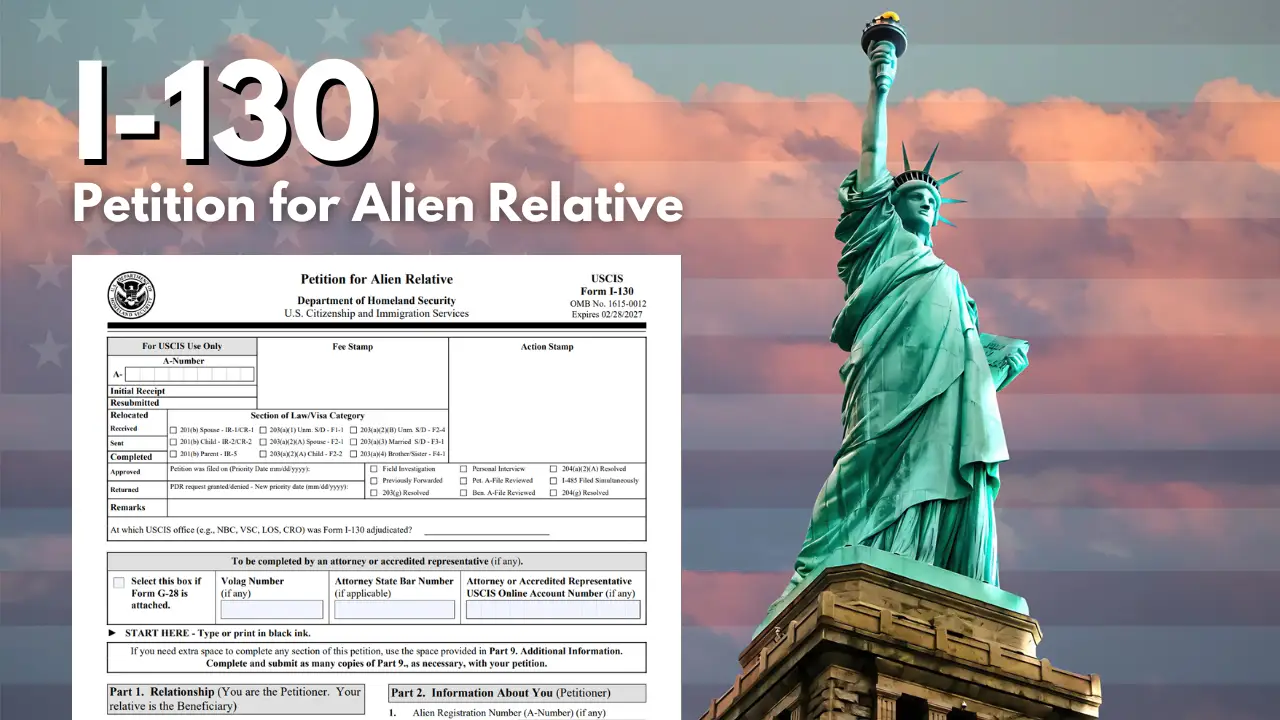
Understanding the Most Important Section of Form I-130 – Avoid Costly Delays
Welcome! If you’re navigating the family-based immigration process, you’re in the right place. I’m Castenia, and I share helpful insights for individuals going through this journey, just like I did. While I’m not an immigration attorney, everything I share is based on public resources, personal experience, and the stories of my community.
The purpose of this post is simple: to empower you to handle your immigration paperwork on your own and avoid common—and sometimes costly—mistakes.
Today, we’re focusing on Form I-130, the critical first step when petitioning a relative to immigrate to the United States. Specifically, we’ll discuss a section that, if filled out incorrectly, could delay your case for months—or even years—and cost you extra fees.
Where to File
You can file Form I-130 in two ways:
✅ Online or
✅ By Mail
Where you file depends on your location and whether you’re filing Form I-485 (for a green card) at the same time, called concurrent filing.
Online Filing
- Create a USCIS account to get started.
- You can file online even if your relative files Form I-485 by mail—just send them the receipt notice.
- Note: You can’t file online if you’re requesting a fee waiver, or if you’re filing Form I-485 or I-129F—those must be mailed.
Mail Filing
- In the U.S.: Send to the correct USCIS Lockbox (Chicago, Dallas, Elgin, or Phoenix) based on your location.
- Outside the U.S.:
- Mail to the Elgin Lockbox
- File online
- Or request to file at a U.S. Embassy (in limited cases for immediate relatives)
Visit the USCIS website for full instructions and address details.
Where Will the Beneficiary Apply for a Green Card?
On Form I-130, there’s a section that asks where your relative (the beneficiary) will continue their green card application. This might seem like a small detail, but it’s arguably one of the most important parts of the entire petition.
For Paper Forms:
These questions appear on Page 8, Part 4, Questions 61a to 62c.
For Online Applications:
You’ll find them in the “Other Information” section, under “Adjustment of Status.”
Why Does This Matter?
If these questions are left blank or answered incorrectly, USCIS might process your case incorrectly. This could lead to delays of several months or even more than a year. Worse, you might need to file Form I-824 to fix the issue—and pay an extra fee.
Let’s break it down.
Form I-130 Filing Fee
To check the current fee, visit the USCIS Fee Schedule page.
You can pay by:
- Money order
- Personal or cashier’s check (made out to U.S. Department of Homeland Security)
- Credit or debit card using Form G-1450
Fees are non-refundable, even if your case is denied or withdrawn. Credit/debit payments can’t be disputed later.
Tip: Use the USCIS Fee Calculator to confirm your exact amount.
Filing multiple forms? Pay each fee separately. If you send one combined payment, your whole package could be rejected due to system limitations.
If the Beneficiary is Inside the U.S. – Adjustment of Status
If your relative is currently in the U.S. and eligible for Adjustment of Status (Form I-485), you’ll answer Questions 61a and 61b.
These questions confirm that the beneficiary will adjust their status without leaving the U.S. You’ll be asked to provide your city and state, so USCIS can assign the appropriate field office for biometrics and a possible green card interview.
This route is often used by immediate relatives of U.S. citizens, where both Form I-130 and Form I-485 are filed together.
If the Beneficiary is Outside the U.S. – Consular Processing
If your relative will apply for their green card through a U.S. embassy or consulate abroad, you’ll skip the adjustment of status section and instead complete Questions 62a to 62c.
Only answer one of these two sections—not both.
This applies to cases where, for example, your parents may need to return to their home country before continuing the immigration process, or when filing for a spouse or child who lives abroad.
What Happens If You Make a Mistake?
If USCIS approves your I-130 but you gave the wrong information (like choosing adjustment of status when consular processing was needed), you’ll have to:
- File Form I-824 to request a transfer to the National Visa Center (NVC)
- Pay an additional filing fee
- Wait several months to over a year for processing
This not only delays your case, but it also creates unnecessary stress.
Special Considerations for Non-Immediate Relatives
If you’re petitioning for a child over 21, siblings, or other relatives who aren’t classified as immediate relatives of a U.S. citizen, the adjustment of status route may not even be available—even if they’re visiting the U.S. right now.
That’s because they’ll likely have to wait years—sometimes 5, 10, or even 20 years—before a green card becomes available. They cannot legally remain in the U.S. that entire time without a valid visa, so consular processing is usually the only option.
Final Thoughts
These questions on Form I-130 might look routine, but they’re pivotal. They determine the path your case will follow—and whether it moves forward smoothly or gets stuck in delays and red tape.
Before submitting your petition, take time to carefully consider your relative’s situation. Is adjustment of status possible and practical? Or will consular processing be the better route?
Avoiding a simple mistake now could save you months of delay and hundreds of dollars later.